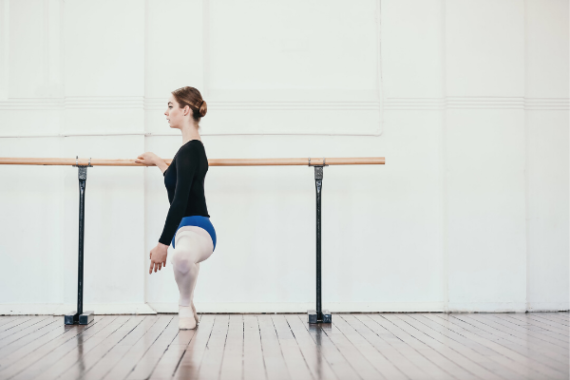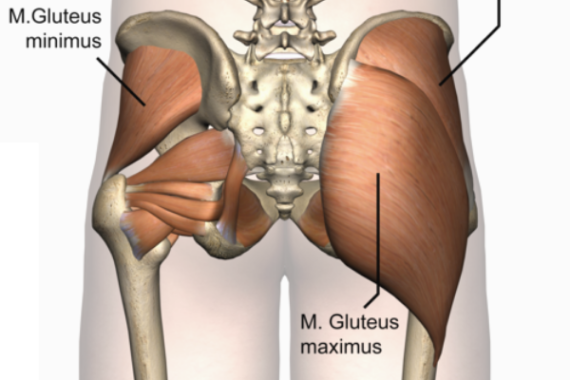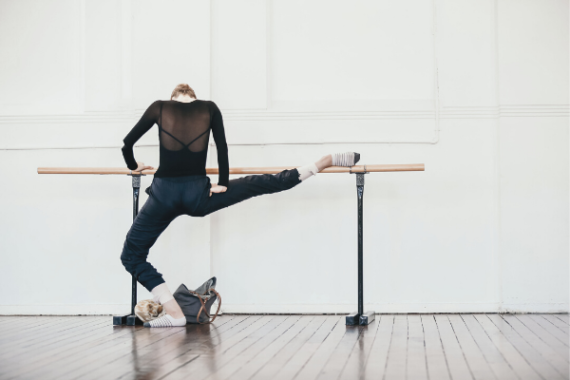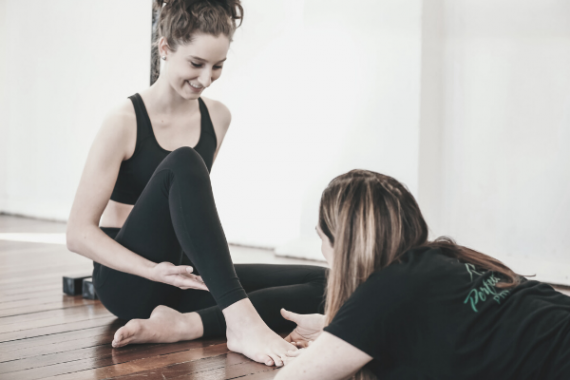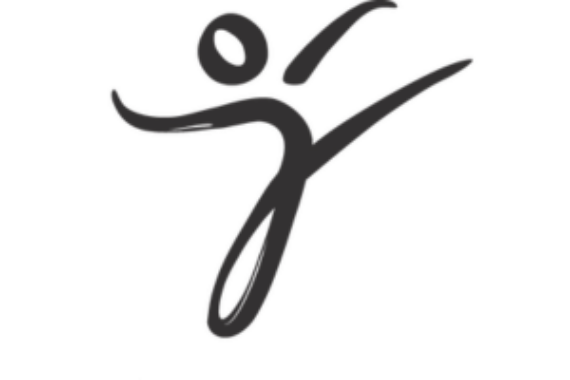Pain Under the Ball of the Foot - Sesamoiditis?
Many students have issues underneath the ball of the foot which can cause a lot of irritation when rising onto demi-pointe. There are many reasons for this. The following is a list that is by no means exhaustive of the reasons why dancers may get pain under the ball of the foot.
1) Sesamoiditis – If the pain is underneath the big toe, this may be irritation of the tissues around the sesamoid bones. These are two little bones under the base of the first metatarsal that provide a tunnel for the FHL tendon to pass through, but they often get irritated with loaded work on demi-pointe.
If it is this, they will be tender to touch right over the area and especially if they roll in on demi pointe. Along with icing and careful use of anti inflammatories, padding in a doughnut shape over the area can help get them through the show, until they have time to deal with the true cause. Often the deeper cause of irritation in this area is actually stiffness in the joint at the top of the first metatarsal – where it joins the medial cuneiform bone, resulting in increased load on the head of the first metatarsal with walking and dancing. Often mobilisation of this area results in less load on the sessamoids especially with normal walking.
2) If the pain is more under the ball of the second toe – this may be if the second toe is longer. In this case I often create a custom made (from regular strapping tape) toe thong with supports to offload the tip of the second metatarsal. This is a GREAT tip and will also help the student balance more on demi pointe. I have made a video that shows this taping in detail, that you can access in the members area of The Advanced Foot Control program. CLICK HERE to watch the video.
3) If the pain is more tenderness over the whole area – it may be that they are landing too heavily on the ball of the foot, and not using the Soleus muscle effectively to control the landing. Below is a video taken from our online program How To Improve Your Pointe Range Safely Without A Footstretcher in which Lisa goes through optimal rise training that focuses on strengthening all muscles of the lower leg even if you do have some pain.
The number of different reasons for pain under the big toe means that the Physio will have to search a little deeper to find the true cause. Simply resting the area is not enough, as if the student returns to class with the same issues still in place, then the pain will usually reoccur. I highly suggest looking into both the Advanced Foot Control for Dancers program (for long-term strengthening) and also the Will I Ever Dance Again? DVDs for ways to allow the student who does need “Relative Rest” to continue with their training.
Our “Will I Ever Dance Again?” program shows you exactly how to manage your dancing in class while taking the appropriate time off, allowing the inflammation to settle. It guides you through a detailed floor barre, as well as a barre that can be done in an orthopedic boot (if you have been fitted with one) so that you can continue working all parts of your body while resting the foot. It also has great exercises that you can do while not jumping to actually improve your jumps long term, as well as gradual progressions to build back into the Allegro, Adage, and Pirouette sections of class. In each of these parts of class, it is essential that you build back slowly, making sure to develop perfect technique, correcting any weaknesses that lead to the Sesamoiditis developing in the first place.
This is an essential step in the rehabilitation of any injury to ensure that it does not return once you start back in class. For more information on the “Will I Ever Dance Again?” program, CLICK HERE.
Often students find that they actually come out of an injury like this stronger and more mobile than before if they learn how to work with their body in the correct way. Improved flexibility and foot control help all areas of dancing, and correct dynamic bio-mechanics of the foot will result in much-improved height and ballon in Allegro work.
Injury & Foot Resources
If you are looking to delve deeper into this topic, check out the following programs:
- Will I Ever Dance Again: The “Will I Ever Dance Again?” program is perfect if you are unable to train at full capacity, whether this is due to a foot injury, surgery, an accident or illness outside of the studio. It helps you build back to full capacity gradually, while maintaining strength, flexibility and control in the rest of the body.
- Level One Dance Teacher and Therapist Training: This unique course covers a multitude of assessment and treatment techniques to individualise a dancer's training. With special focuses on Postural Control, Core Stability, Flexibility, Basic Classical Technique, The Dancers Hip, Allegro, Spinal Mobility and Arabesques, it is suitable for anyone working closely with dancers.




